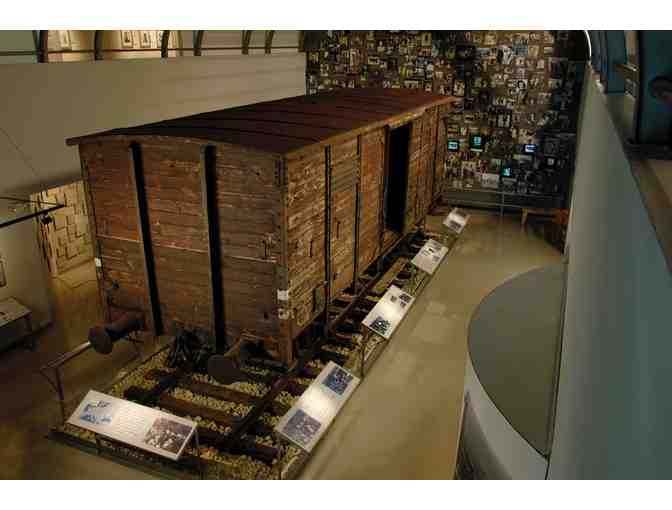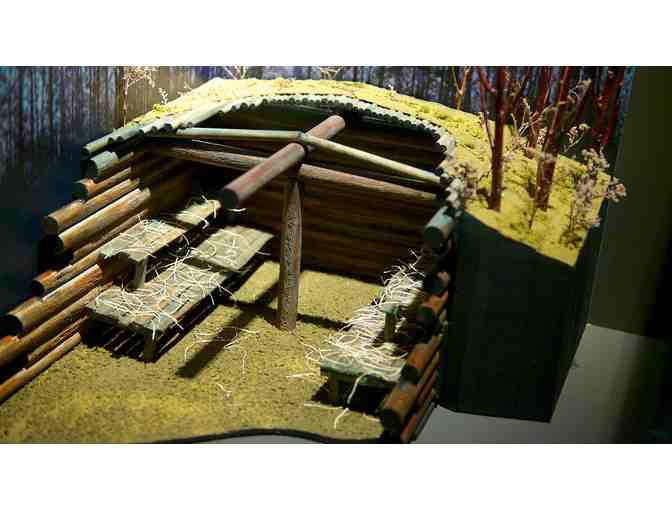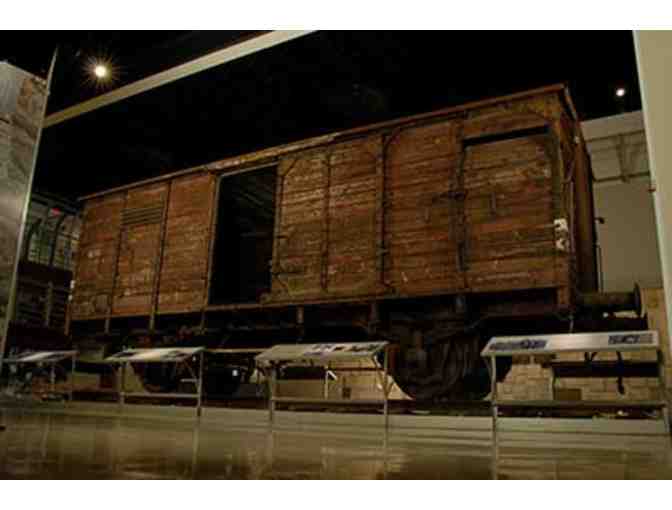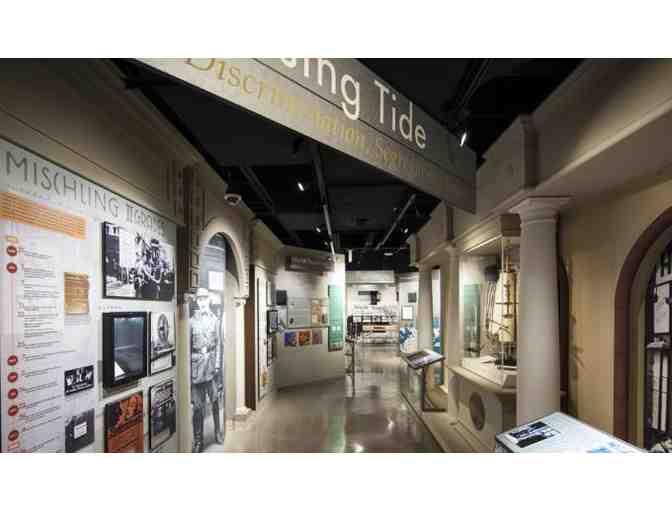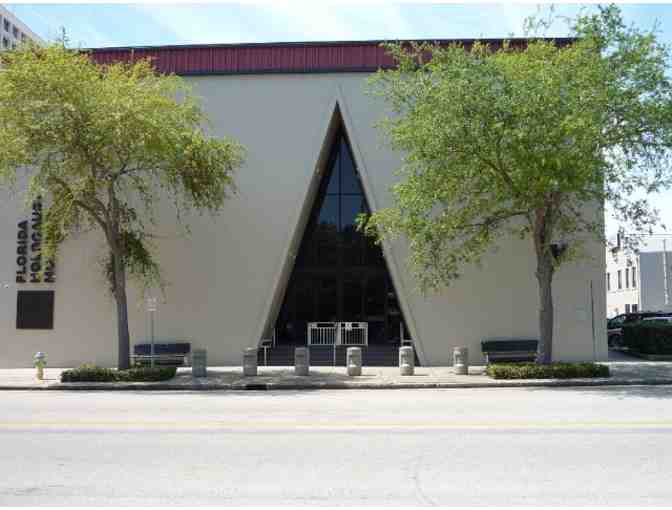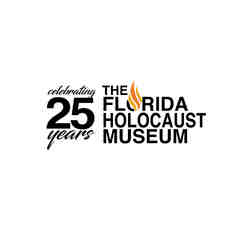Attractions
Florida Holocaust Museum - Four Admission Passes
- Item Number
- 206
- Estimated Value
- 64 USD
- Sold
- 24 USD to MOLIL
- Number of Bids
- 1 - Bid History
Item Description
Four Admission Passes!
One of the largest Holocaust museums in the country, The Florida Holocaust Museum is the result of St. Petersburg businessman and philanthropist Walter P. Loebenberg’s remarkable journey and vision. Loebenberg escaped Nazi Germany in 1939 and served in the United States Army during World War II. Together with a group of local businessmen and community leaders, the concept of a living memorial to those who suffered and perished was conceived. Among the participating individuals were Survivors of the Holocaust and individuals who lost relatives, as well as those who had no personal investment, other than wanting to ensure that such atrocities could never again happen to any group of people.
The group enlisted the support of others in the community and were able to involve internationally renowned Holocaust scholars. Thomas Keneally, author of Schindler’s List, joined the Board of Advisors and Elie Wiesel was named Honorary Chairman of this Holocaust Center.
In 1992, the Museum rented a space it could afford but would soon outgrow, on the grounds of the Jewish Community Center of Pinellas County in Madeira Beach, Florida, tucked away from the mainstream of Tampa Bay life. Starting with only one staff member and a small group of dedicated volunteers, it quickly surpassed all expectations.
Within the first month, over 24,000 visitors came to see Anne Frank in the World, the Center’s inaugural exhibit. The Tampa Bay showing of this exhibition touched all visitors.
During the next five years, the new Holocaust Center greeted more than 125,000 visitors to view internationally acclaimed exhibits. Thousands more participated in lectures, seminars and commemorative events at the Center, which now reached directly into schools in an eight county area surrounding Tampa Bay with study guides, teacher training programs and presentations by Center staff and Holocaust Survivors.
The Center expanded to encompass a growing print and audio-visual library, a photographic archive, a repository for historic artifacts, and a research facility for educators and scholars – all of this crowded into a 4,000 square foot facility that was not designed for museum or educational purposes.
Undeterred by constraints of size or location, the Tampa Bay Holocaust Memorial Museum and Educational Center evolved into the preeminent source of Holocaust information in the Southeastern United States and one of the foremost Holocaust institutions in the country.
As a result of this growth, the Board of Directors approved the purchase of a 27,000 square foot building in downtown St. Petersburg, Florida, to be renovated and occupied by 1998.
In one year, the doors of the new building opened on February 28, 1998, under budget and ahead of schedule. Over 65,000 visitors viewed the exhibits of the Museum during its first year in its new location. Traveling and special exhibits such as Judy Chicago’s Holocaust Project: From Darkness into Light, Michael Smuss: Reflections of a Survivor, Simon Wiesenthal Center’s Stealing Home: How Jackie Robinson Changed America, Robert O. Fisch: Light from a Yellow Star and Witness and Legacy offered visual explorations of the Holocaust and modern day issues.
In January, 1999, the Museum officially changed its name to The Florida Holocaust Museum. The new name was better suited to the organization because of the criteria established in the mission statement of the Museum and reflected the utilization of the Museum as a statewide and national resource, and created greater awareness and impact beyond the Tampa Bay area.
The Museum played a critical role in shaping legislation that in 1994 made Florida one of the first states in the nation to mandate Holocaust education in the public schools from kindergarten through twelfth grade. In a collaboration effort between the Museum and the Pinellas County School System, guidelines were developed for K-12 teachers. The guidelines include grade-appropriate instructional goals and bibliography for teaching the Holocaust. These guidelines are used by teachers throughout the nation as well as in Florida.
All of the suffering and loss is meaningless if we do not understand what took place and act to insure that it will never happen again. We must challenge and educate those who promote hatred and intolerance. The vision of The Florida Holocaust Museum is a future in which peace and harmony are a reality in our neighborhoods, in our nation and in our world.
Item Special Note
Expires: July 13, 2020
Considering taking a mini vacation in the Tampa/St. Petersburg /Lakeland /Sarasota area? Then, you might want to bid on the following items:
Toronto Blue Jays, American Victory Ship & Museum, The Florida Orchestra, Great Explorations, Clearwater Marine Aquarium, Busch Gardens, Bok Singing Tower, Florida Holocaust Museum, Sarasota Bay Explorers, Tampa Museum of Art, The Bishop Museum of Science and Nature, Canoe Outpost, Splitsville-Tampa, Outback Bowl, Hubbard's Marina, Suncoast Primate Sanctuary, Tampa Bay Downs, and The Big Cat Habitat.
Donated By:
Golden Grove Community Elementary School PTO stores data...
Your support matters, so Golden Grove Community Elementary School PTO would like to use your information to keep in touch about things that may matter to you. If you choose to hear from Golden Grove Community Elementary School PTO, we may contact you in the future about our ongoing efforts.
Your privacy is important to us, so Golden Grove Community Elementary School PTO will keep your personal data secure and Golden Grove Community Elementary School PTO will not use it for marketing communications which you have not agreed to receive. At any time, you may withdraw consent by emailing Privacy@frontstream.com or by contacting our Privacy Officer. Please see our Privacy Policy found here PrivacyPolicy.

